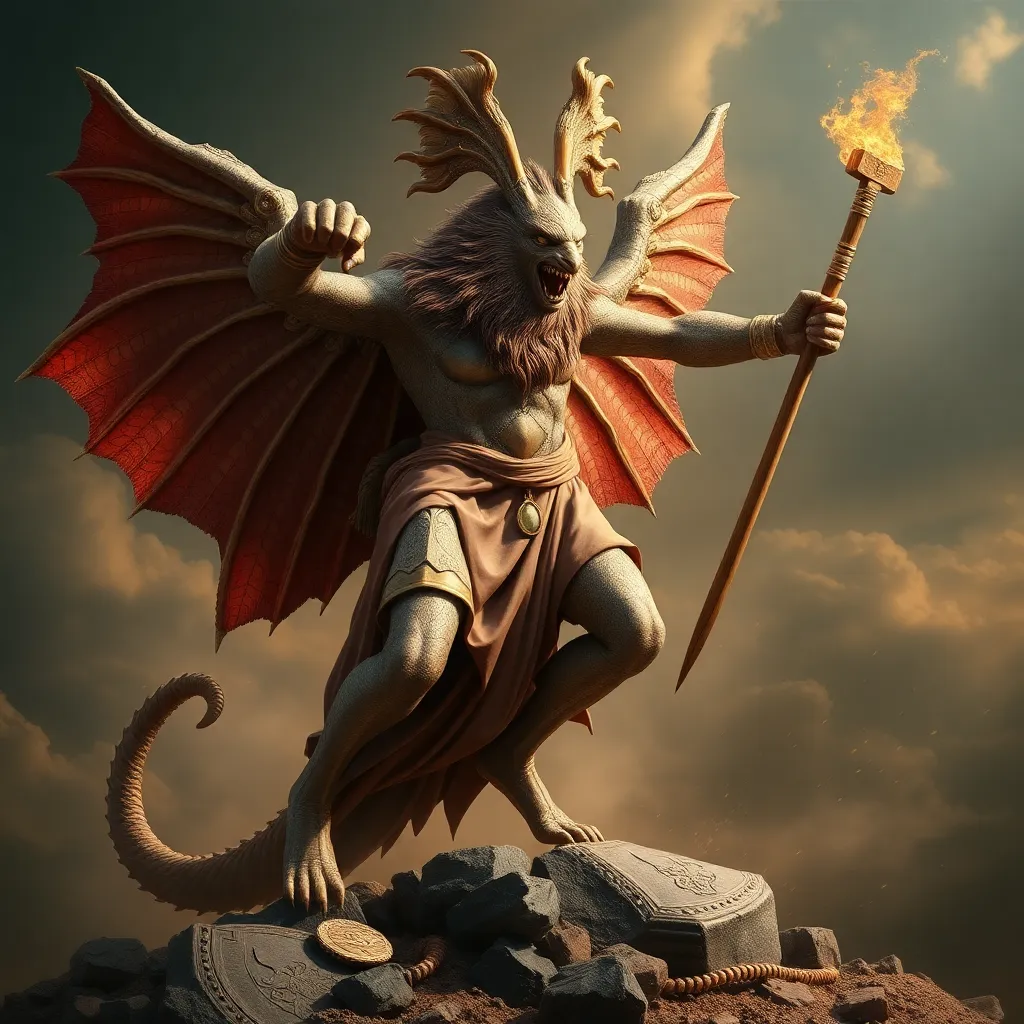The Role of Mythological Creatures in Greek Heroic Epics
I. Introduction
In Greek mythology, mythological creatures are fantastical beings that populate the ancient tales, embodying various aspects of human experience, nature, and the divine. These creatures range from the terrifying to the enchanting, each serving a unique purpose within the narratives. The Greek heroic epics, such as “The Iliad” and “The Odyssey,” are rich with these beings, showcasing the adventures and challenges faced by legendary figures like Achilles and Odysseus.
This article will explore the significance of mythological creatures in shaping the narratives and themes of Greek heroic epics. Through their interactions with heroes, these creatures not only advance the plot but also reflect deeper societal values and moral lessons.
II. The Function of Mythological Creatures in Heroic Epics
Mythological creatures fulfill several essential functions within heroic epics:
- Embodiments of Challenges: Creatures often represent the formidable challenges that heroes must face, testing their strength, intelligence, and resolve.
- Symbolism of Conflicts: Many creatures symbolize internal and external conflicts, reflecting the heroes’ struggles with their own fears and desires.
- Advancement of Plot: Encounters with these beings propel the narrative forward, facilitating character development and revealing the hero’s true nature.
III. Famous Mythological Creatures and Their Representations
Several notable mythological creatures stand out in Greek literature, each with distinct symbolic meanings:
A. The Cyclopes
The Cyclopes, one-eyed giants known for their brute strength and craftsmanship, represent the theme of singular vision and raw power. In “The Odyssey,” Odysseus encounters Polyphemus, a Cyclops whose monstrous nature poses a significant threat to his crew. This encounter highlights the tension between physical might and cleverness, a recurring motif in hero narratives.
B. Sirens
Sirens are enchanting creatures whose beautiful voices lure sailors to their doom. They symbolize temptation and the perils of desire. In “The Odyssey,” Odysseus must navigate the Sirens’ song without succumbing, showcasing the importance of self-control and the dangers of yielding to temptation.
C. Charybdis and Scylla
Charybdis and Scylla are two formidable sea monsters that pose a dual threat to Odysseus. Charybdis represents the unpredictable forces of nature, while Scylla embodies the dangers that lurk in familiar places. Their presence serves as a metaphor for the hero’s journey, where one must often choose between two equally perilous paths.
IV. Interactions Between Heroes and Mythological Creatures
The encounters between heroes and mythological creatures often serve as critical turning points in their journeys:
- Tests of Mettle: Heroes like Odysseus face creatures that test their courage and resolve, such as his encounter with the Cyclops.
- Cunning Over Strength: Odysseus often relies on his intellect rather than brute strength, exemplified in his clever escape from Polyphemus.
- Learning and Growth: Each encounter with a creature provides opportunities for personal growth, teaching heroes valuable lessons about their strengths and weaknesses.
V. Mythological Creatures as Cultural Reflections
The creatures of Greek mythology illuminate ancient Greek values and fears:
- Insights into Values: Creatures often reflect the ideals of bravery, wisdom, and the consequences of hubris.
- Societal Norms: The ways in which heroes confront these beings reveal societal expectations of heroism and virtue.
- Moral Lessons: Many encounters serve as cautionary tales, warning against arrogance, greed, and the dangers of straying from one’s path.
VI. The Evolution of Mythological Creatures in Later Literature
The influence of Greek mythological creatures extends far beyond their original narratives:
- Subsequent Literary Works: Many later authors, from the Romans to the Renaissance writers, have drawn inspiration from these creatures, weaving them into their own tales.
- Modern Interpretations: Today, creatures like the Cyclopes and Sirens are reinterpreted in films, literature, and art, often adapting their symbolism to contemporary themes.
- Continuing Legacy: The legacy of Greek mythological figures can be seen in modern storytelling, influencing genres ranging from fantasy to horror.
VII. Conclusion
In summary, mythological creatures play a crucial role in Greek heroic epics, shaping narratives and enriching themes. Their interactions with heroes not only advance the plot but also offer profound insights into human nature and societal values. The lasting impact of these creatures on storytelling continues to resonate today, inviting us to explore the intricate interplay between mythology and literature.
VIII. References and Further Reading
- Suggested Texts: “The Iliad” by Homer, “The Odyssey” by Homer, “Metamorphoses” by Ovid.
- Academic Studies: “Monsters and Monstrosity in Greek Literature” by [Author Name], “The Hero’s Journey in Greek Myth” by [Author Name].
- Resources: Online databases and websites dedicated to Greek mythology, such as Theoi.com and GreekMythology.com.




